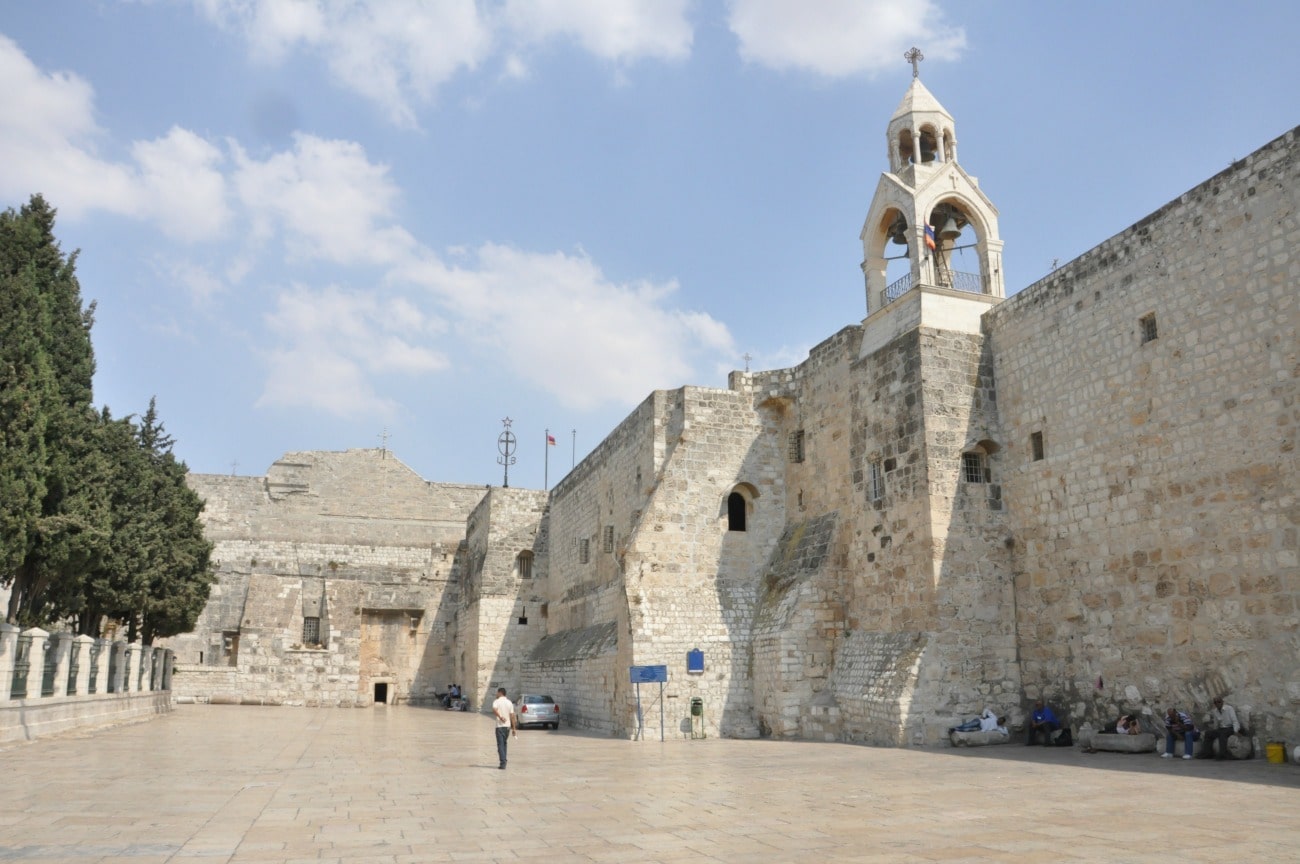When culinary event marketer Herb Karlitz visited Israel in 2018, he was blown away by the food scene, and how it had changed from his first trip, more than 20 years before. “I had left schnitzled out and underwhelmed by the lack of variety in dishes,” he confessed. “After eating the most amazing food this last time and seeing the difference the country has undergone in terms of ingredients and technique, I was convinced Israel’s food story had to be told.“ Herb decided he would go back with a group of his friends, who happen to be the country’s most celebrated chefs and culinary influencers. The trip was dubbed “Celebrity Chef Birthright.” Oddly enough, the group was not all Jewish, nor were any of them students for whom the iconic “Birthright” program is typically intended.
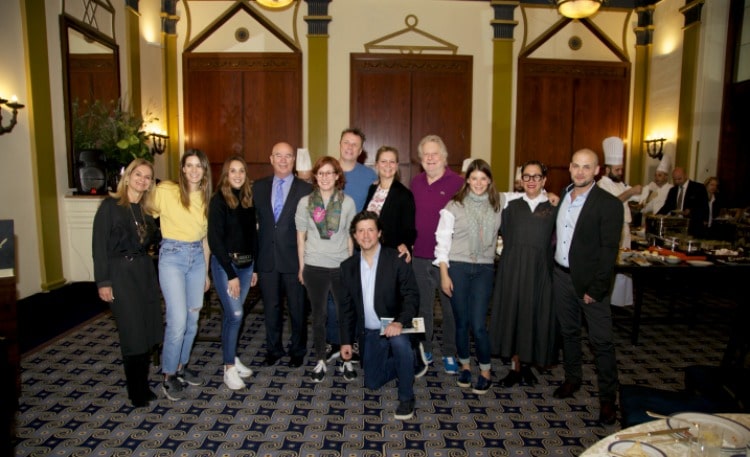
Gourmet Expedition
Food may seem an odd priority for a visit to Jerusalem, one of the world’s oldest cities and a holy place for three of the world’s major religions – Islam, Judaism and Christianity. But Herb, founder of Karlitz & Co., had organized a weeklong gastronomic road trip through this city and Tel Aviv. Food world luminaries on this adventure included former New York Times restaurant critic Ruth Reichl, “Chopped” judges Amanda Freitag and Marc Murphy, chef and culinary TV Personality Andrew Zimmern, Pig & Khao’s Leah Cohen, Top Chef’s Nancy Silverton from Mozza Restaurant Group and Eden Grinshpan. Other foodies included Naama Shefi, Founder of The Jewish Food Society, and Barbuto’s Jonathan Waxman.
The first-of-its-kind gourmet expedition allowed the group to experience Israel’s vibrant food scene, and to break bread with the country’s most accomplished chefs, food producers, winemakers, and culinary tech innovators. While I was lucky to tag along and indulge in the amazing cuisine, it was just the icing on the cake of my first trip here. So, between bites I slipped off to see the sights in and around this fascinating city, which teems with ancient history but is a modern metropolis. Here are my recommendations.
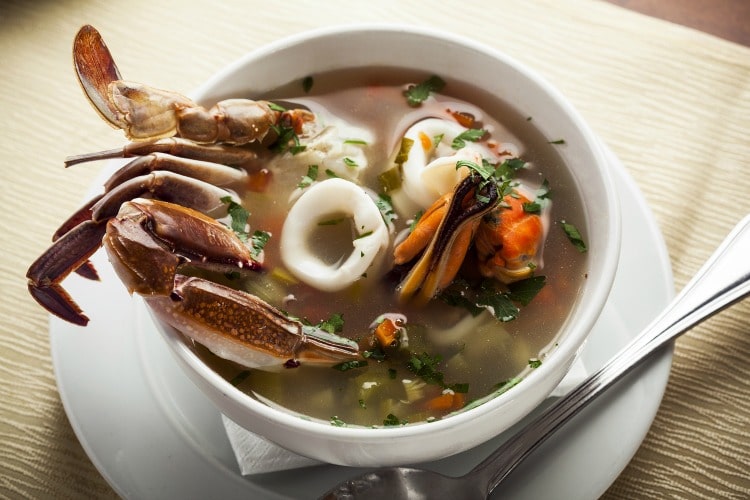
Arrival
I arrived at Tel Aviv’s Ben Gurion Airport, Israel’s main international hub and the busiest in the country. This is a 10-and-a-half-hour trip and if you fly first class you’ll be rested and ready to go out. It’s a 50-minute drive to the King David Hotel in Jerusalem, the city’s best. Alternatively, there’s a high-speed train that gets you to Yitzhak Navon Station in central Jerusalem in a little over 20 minutes. I had reserved the King David, one of the world’s legendary hotels and unquestionably famous. My luxurious room had a private terrace overlooking the Old City, definitely the best view to have. Built in the 1920s, the hotel has been hosting kings, queens and visiting heads of state and celebrities in all fields, from Madonna to John Malkovich, Marianne Faithful to Kirk Douglas. It’s in the Christian Quarter where you can follow Jesus’ final steps by walking the Via Dolorosa. The route ends at the Church of the Holy Sepulchre, the site where he was buried. The sights and sounds of the Old City are like no other; you feel this is a powerfully spiritual place, whatever your beliefs.
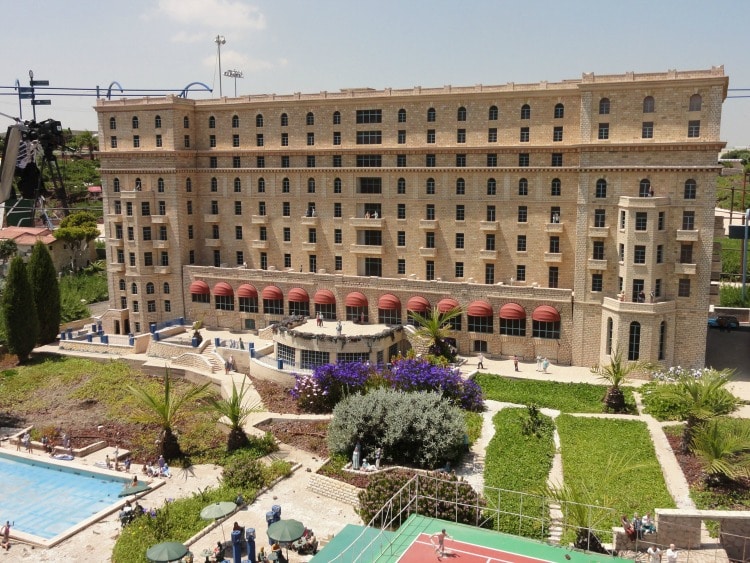
Old City
The walled Old City, about a third of a square mile in size, is made up of four quarters – Christian, Armenian, Muslim and Jewish. It’s home to notable sites of religious significance. Amazingly, this small area, dating back at least 5,000 years, constituted the entire city of Jerusalem until 1860, when the first neighborhood outside the walls was established. The Old City was declared a UNESCO World Heritage Site in 1981 and its importance to followers of the three major religions is well-documented especially as the three most sacred spots in the world are all, literally, sitting right next to one another. The golden Dome of the Rock, an Islamic shrine, sits on top of the Temple Mount, the Western Wall is below, and steps away is the Church of the Holy Sepulchre, Christianity’s holiest site.
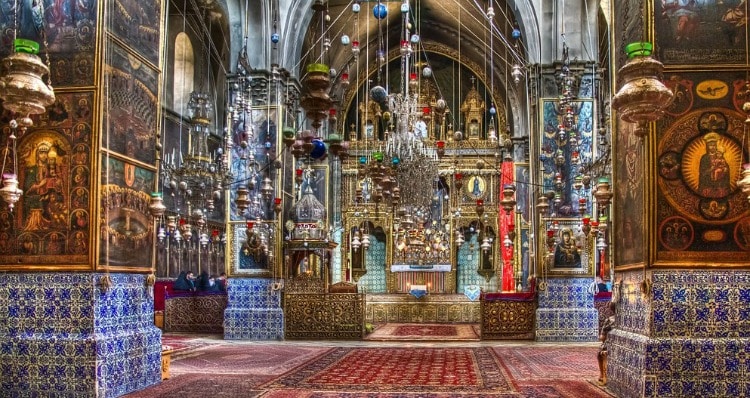
The Jewish Quarter
We spent the morning and early afternoon touring the Jewish quarter, home to the Hurva Synagogue which was destroyed and rebuilt several times, and the Western Wall, also known as the Wailing Wall, the number one attraction. The wall was originally erected as part of the Second Jewish Temple begun by Herod in 19 B.C. It encases the Temple Mount, a hill considered holy to Jews, Christians and Muslims. The term “Wailing Wall” derives from the centuries-old practice of Jews weeping over the destruction of the temples while praying. Only a small section is on view in the famous plaza, but you can visit a larger portion underground in a labyrinthine maze of tunnels dating back to the second century B.C. They’re underground because the walls run alongside the Dome of the Rock and the Al-Aqsa mosque, where only Muslims are permitted. It’s a fascinating look at ancient history which the Arabs and Israelis have clashed over for centuries and the controversy is still alive today.
Certain spaces in the tunnels are used for weddings and bar mitzvahs, and its marvels include a mikveh, or ritual bath, used by people working in the temple 2,000 years ago. There’s also the “Western Wall stone,” the largest stone in the Middle East at 42 feet long, 11 feet high and 14 feet thick. It is believed to be the largest object ever lifted by humans without modern machinery. Archeological excavations are ongoing, and it’s expected that someday remains of the first temple will be uncovered.
Church of the Holy Sepulchre
We toured the Church of the Holy Sepulchre, one of the holiest sites in Christianity and situated on the site where Jesus was buried and from where he resurrected. The church contains five stations representing The Passion of Christ and after centuries of squabbling it’s now shared by five different Christian denominations: Roman Catholic, Greek Orthodox, Coptic, Syrian Orthodox and Armenian. Be sure to catch the afternoon procession when members of all five branches proceed from Calvary to the tomb, each with different robes, chants and hymns.
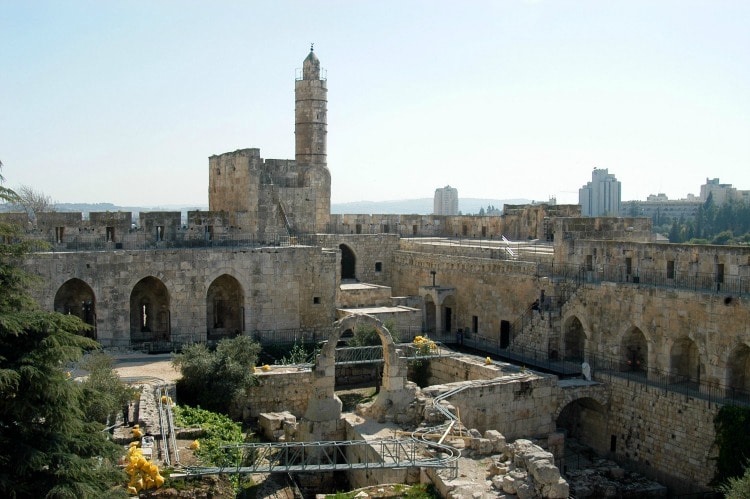
Chef Ido Zarmi & the Tower of David
Our troop of foodies was invited to a 12-course dinner at the Tower of David, a magnificently restored Citadel at the Jaffa Gate that dates to the 5th century. Melisende, the 12th century queen of Jerusalem, ruled from here, and one local dignitary mused, “In the Queen’s time there were meals served like the one we’re about to eat.” I doubt that Melisende’s meals were as innovative as this one, a masterful flurry of dishes such as a miniature sabich – a sandwich of eggplant, tahini, quail egg and olive oil which is a culinary revelation, like eating a hamburger for the first time Each course was paired with carefully selected wines, and Chef Ido Zarmi used nine varieties of Israeli olive oil in creating the feast. Zarmi said his mission was to use the best Israeli ingredients, prepared by the best-trained Israeli chefs, and served in the most lavish Israeli setting. The dinner ended with a dazzling display of handmade chocolates by Ika Chocolates. The setting for the meal in the Crusader Hall was spectacular.
The Tower itself is now a museum housing permanent exhibitions that tell the story of Jerusalem and from the top there are breathtaking views. Don’t miss the daily “Night Spectacular”, an unforgettable outdoor sound and light show projected onto its ancient stone walls.
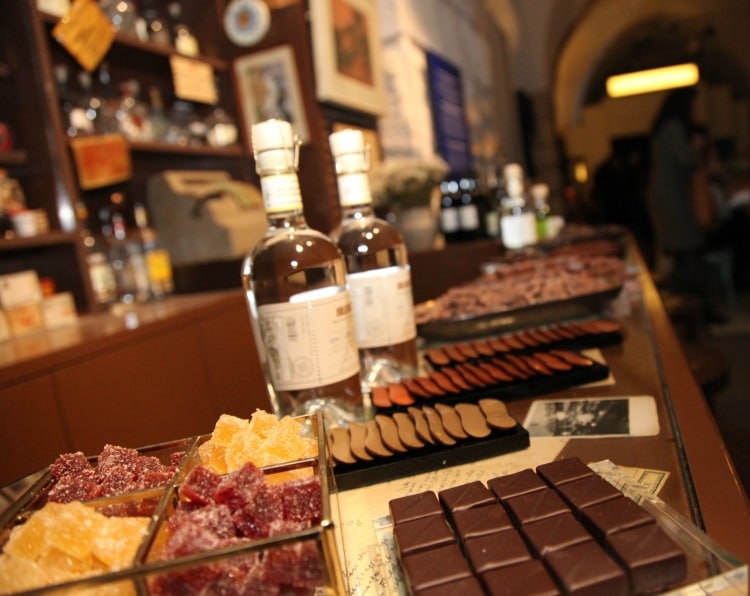
Church of the Nativity
The church that marks the site of Christ’s birthplace is in Bethlehem, a stone’s throw from Jerusalem. The only doorway in the fortress-like front wall is just 4 feet high so stoop low! The Crusaders lowered the entrance around the year 1500 to prevent attackers from riding in on horseback. It’s known as the “Door of Humility,” as Christians deem it appropriate to bow down low before entering the place where Jesus humbled himself to become a man. It’s one of the world’s oldest churches and is still in operation.
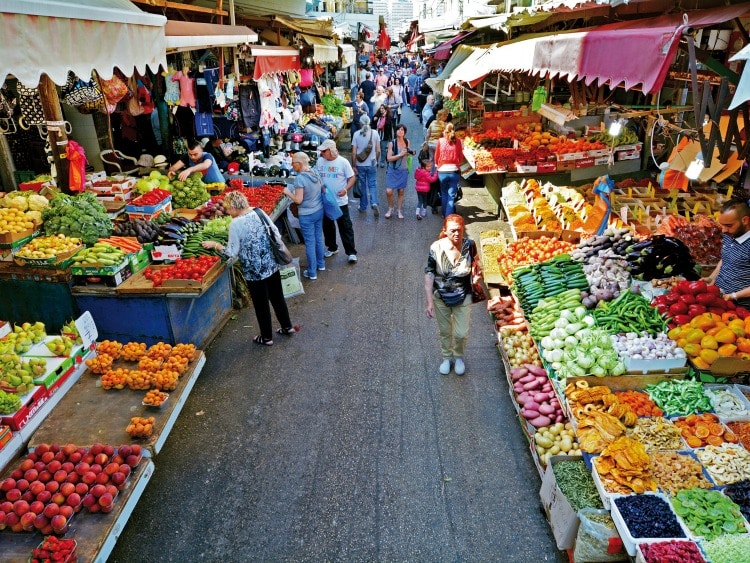
The Mahane Yehuda Market
A trip to the Mahane Yehuda, Jerusalem’s largest market, with several hundred vendors selling everything from fruits, vegetables and specialty foods to crafts, clothing and Judaica, is not to be missed. A traditional Middle Eastern style souk, the market is a panoply of colors, sounds, and smells and was one of the most enjoyable experiences of our trip. I tried everything from hummus and freshly baked pita with pinches of exotic spices to heavenly sweets that were handed out by the owners of the different booths.
Naturally, it was a big hit with our group of gourmands. The King David can arrange a tour, with stops at purveyors of spices, olive oil, Jerusalem-style tahini and halva, health drinks, natural healing products, baked goods and sweets. During the tour, you’ll have the chance to taste offerings from the most interesting stands, and to speak with the merchants themselves and hear stories that have become, with time, a part of the unique history of the community and the city.
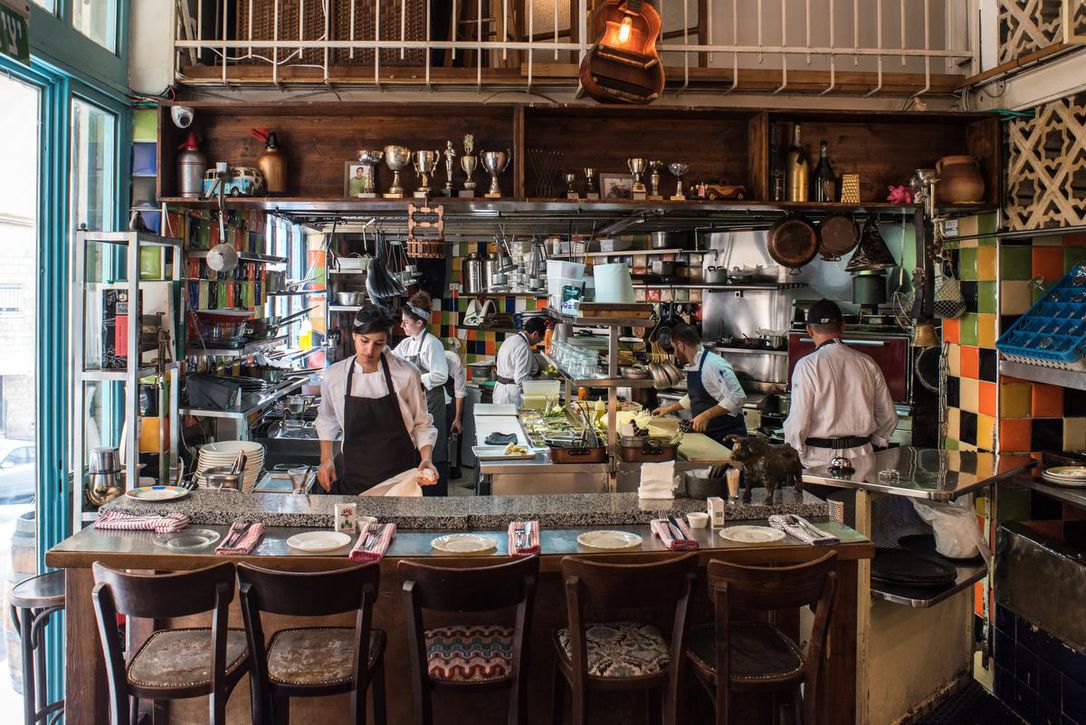
*Now come and follow our exploits as we head to Tel Aviv for Part 2 of Celebrity Chef Birthright.
[alert type=white]
The international dialing code for Jerusalem is 972.
Where to Stay:
The King David – 23 King David St., Jerusalem; +972-3-7408966; 800-223-7773/4;
www.danhotels.com
Where to Eat & Drink:
Machneyuda – One of Jerusalem’s top-rated and most popular restaurants located in the Mahane Yehuda marketplace. The menu changes daily depending upon the market’s offerings. “Chopped” judge Amanda Freitag summed up the meal perfectly, saying, “Machneyuda is the most fun, delicious, energetic, dinner in Jerusalem! Have Shikshukit-tahini and yogurt with ground kebab, Burrata, polenta, and “the jungle” for dessert, an interactive beautiful mess of delicious sweets.” 10 Beit Yaakov St., Mahane Yehuda, Jerusalem; +972 2-533 3442; www.machneyuda.co.il
Mahane Yehuda Market – Agripas St. 90, Jerusalem
What to See & Do:
The Lions’ Gate – This is one of seven gates in the Old City’s Walls. The lions come from a dream that Ottoman Sultan Suleiman the Magnificent had in which two lions were chasing him. He interpreted this as a sign that the city needed to be protected, and ordered that Jerusalem be surrounded with a wall. The Via Dolorosa begins here and take note that every year on Palm Sunday, a Christian procession from the Mount of Olives enters here, walking in the path of Jesus.
Yad Vashem – The World Holocaust Remembrance Center, a powerful sight, is set on 45 acres with museums, outdoor monuments, memorial sites, gardens, sculptures and exhibition spaces devoted to preserving the memory of the Holocaust. A highlight is a cavern with a single candle reflected in a series of mirrors, a tribute to the 1.5 million children killed. Har Hazikaron;
+972 2 6443400; www.yadvashem.org
[/alert]

